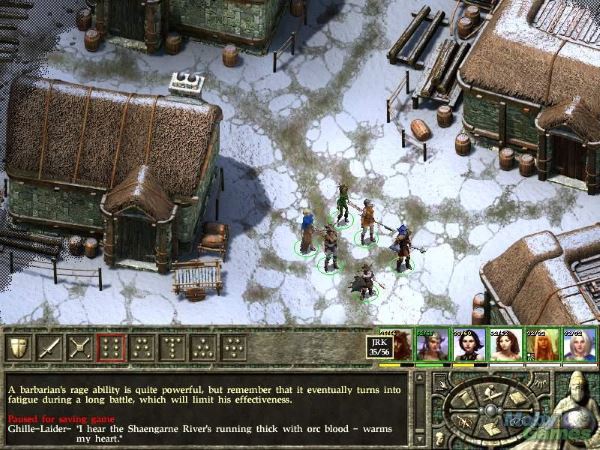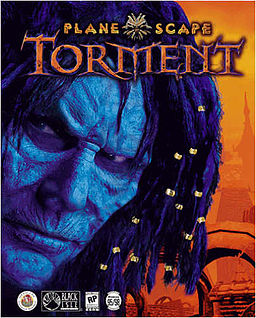inXile Entertainment who rebooted Bard’s Tale and Wasteland is now working on a new Torment reboot.
A bit of game legend history
For those of you born after 1990, let me bring you up to speed. The first Torment game, Planescape: Torment, was released in 1999 and is built on BioWare’s Infinity Engine. Infinity Engine is the engine which games such as Baldur’s Gate and the Icewind Dale series are built on. The engine uses a three quarters perspective with pre-rendered 2D backgrounds.
The games running within Infinity Engine, all use the real set of Advanced Dungeon & Dragons rules running in the background to determine what happens as you play the game. Whether your sword hits or misses, whether your armor blocks the dagger thrust, whether your bard’s song affects a member of the enemy party, how much a potion costs at a shop, are all based on digital rolls of “dice” in the background according to official AD&D rules.
It starts with a man waking up and having no memory of who he is or where he came from.
Rather than quick smash and bash action, the new Torment game will likely be turn-based as it was with the original. The story line and plot with the first Torment game is deep and involving, focusing on driving the game via story as opposed to action. Indeed some quests can be solved via dialogue. It starts with a man waking up and having no memory of who he is or where he came from.

Planescape: Torment begins like this, from Wikipedia:
The game’s story begins when The Nameless One wakes up in a mortuary. He is immediately approached by a floating skull, Morte, who offers advice on how to escape. Morte also reads the tattoos written on The Nameless One’s back, which were inked there as reminders to himself, that contain instructions to find a man named Pharod. After a conversation with the ghost of his former lover, Deionarra, and passing by various undead, The Nameless One leaves the mortuary to explore the slums of Sigil.
If you’re an RPG fan and enjoy story-driven RPG games, see this video below and if it looks like something you would enjoy, go get it and check out this epic piece of gaming history. Yes, the graphics look like the game came out of 1999 (because it did), but the story and play is no less intriguing and enjoyable now than it was 15 years ago.
Torment: Tides of Numenera
inXile Entertainment is hard at work on several projects, but their most ambitious is Torment: Tides of Numenera. Rather than using the Infinity Engine, inXile has built the game from the ground up using the Unity Engine. The beauty of this is that the Unity Engine allows games to be built cross-platform. Meaning games can be very easily ported to nearly any modern system, from Android to iOS to Windows to Xbox 360.
We can see the Unity Engine has given the series a big boost in visual polish
Check out this early peak of Torment: Tides of Numenera. We can see the Unity Engine has given the series a big boost in visual polish compared to Planescape: Torment, it’s predecessor.
From Wikipedia:
“With an emphasis on portability, [Unity Engine] targets the following APIs: Direct3D on Windows and Xbox 360; OpenGL on Mac, Windows, and Linux; OpenGL ES on Android and iOS; and proprietary APIs on video game consoles. Unity allows specification of texture compression and resolution settings for each platform the game supports”
Unfortunately, while the Unity engine does allow for easy portability to Android, inXile is currently focused on Windows, OS X and Linux. However, that doesn’t mean an Android version won’t come a bit later. There is tons of money to be made in mobile and I don’t see inXile passing up the opportunity.

So far they have amassed an astonishing $4.725 million and are gunning for $4.75.
The Planescape: Tides of Numenera is scheduled to be released in the first half of 2015.

Leave a Reply